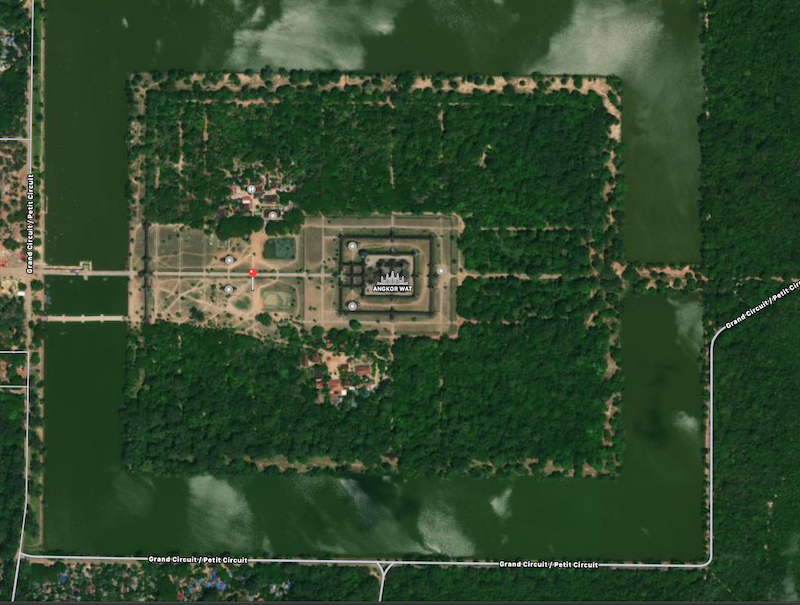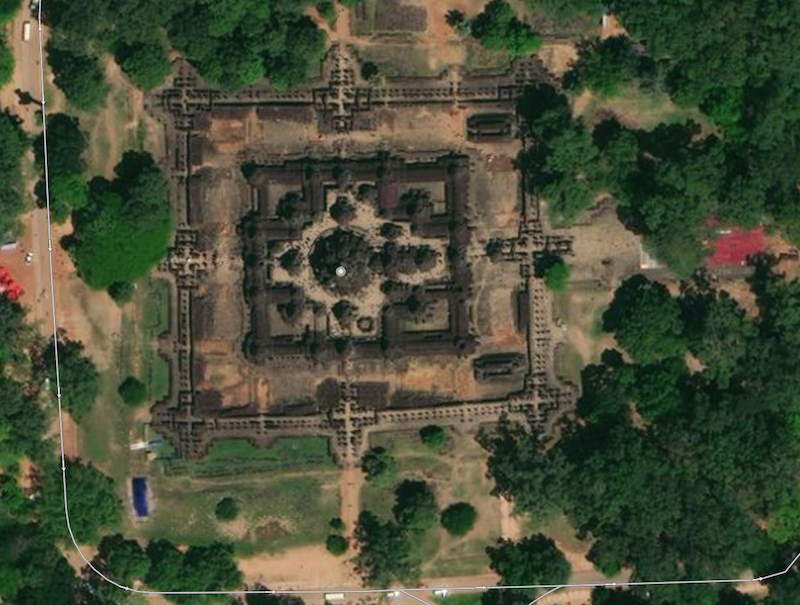Cambodia
November 10-11, 2019
The complex of temples that includes Angkor Wat lies just outside of the large city of Siem Reap. And as it turns out we arrived right in time for the annual Water Festival which was, in part, held in the park at our hotel. It insured we were not lonely visiting the temples. It also provided surprise on our last night.
We had done some research before we arrived. Still the lecture Bill gave on the plane was eye opening. Around the year 1000 the Angkor area was the largest city in the world. Also Angkor Wat is only one of a number of similar complexes. We visited three different complexes. Angkor Wat which is the largest and most famous, Ta Prohm (the temple supported by trees), and Bayon Temple of Angkor Thom. These were both religious sites and tombs.
This was another area where we expected rain. Fortunately, the rain held off while we were touring.
Many of our guides were in their 50's and thus were children during the Killing Fields. Here is the story of one of our guides.
The evening of our arrival we went next door to a museum. Unfortunately no pictures were allowed. I don't think I have ever seen so many Buddhas (until I got to Tibet).
We took a lot of photos in this location. Consequently this page has more photos than normal. Hopefully this will convey a more complete story of what we saw. Additional photos are available in the uncurated pages.
Angkor Wat
We opted for the longer sunrise visit to Angkor Wat. This avoided some of the Water Festival crowd, but also gave the possibility of a Tongariki like sunrise. Jason again led. We arrived in total darkness and walked in with flashlights using the bridge on the left of the aerial below until we got to pin on the aerial. Here we waited with the complex reveling itself as the sun rose. Our hopes for a good sunrise changed to hopes we did not need our rain gear.

These are photos of the North Temple Area which is the set of buildings northwest of the main temple.
Now it was time to enter Angkor Wat itself. The temple has three main parts. An outer ring of corridors. A second ring that holds an elevated courtyard. Finally the central structure. We were not allowed in the central structure, but explored the rest

Second Level Courtyard

The reason for Eclipses
Here I thought I understood eclipses. After all I am an eclipse junkie. The Kumars offered an explanation I will have to carefully consider.😀
The world is a tug of war between good and evil balanced on the turtle of the universe. This produces essence which one demon ate, but was immediately beheaded. In retaliation the demon started consuming the sun and the moon. Since the demon had no neck as soon as the sun/moon was eaten it would reappear.
Ta Prohm
We left Angkor Wat for a breakfast feast at the local restaurant. Full of food we then went to our next site Ta Prohm. This was more the ruins of a temple. The trees had taken over and were now responsible for supporting the remaining structure.
Bayon Temple
The last temple we visited was Bayon. This is part of the larger Angkor Thom complex.
The state of this temple was intermediate to Angkor Wat and Ta Prohm. Much was in ruins, but also much of the structure was intact. We approached from the east (from right in aerial).

Silk Co-op
In the afternoon we were supposed to visit a landmine museum. Unfortunately, the roads were so bad that we were "advised" to select another visit. I chose to go to the Silk Co-op. Carrie opted to spend Riel buying silk
Evening Party
In the evening we had cocktails, dinner, and a show.
Overnight the Water Festival ended. We were surprised by a fireworks show right in front of the hotel.
Departure
In the morning we headed directly to the airport for an 8:30 AM departure. In 3hr 40 min we were in Nepal.
On to Nepal